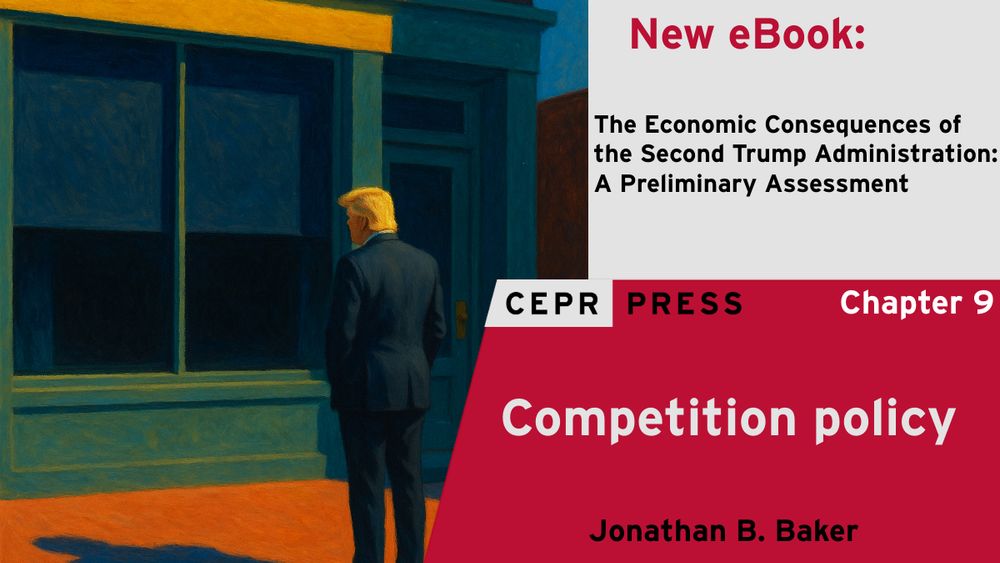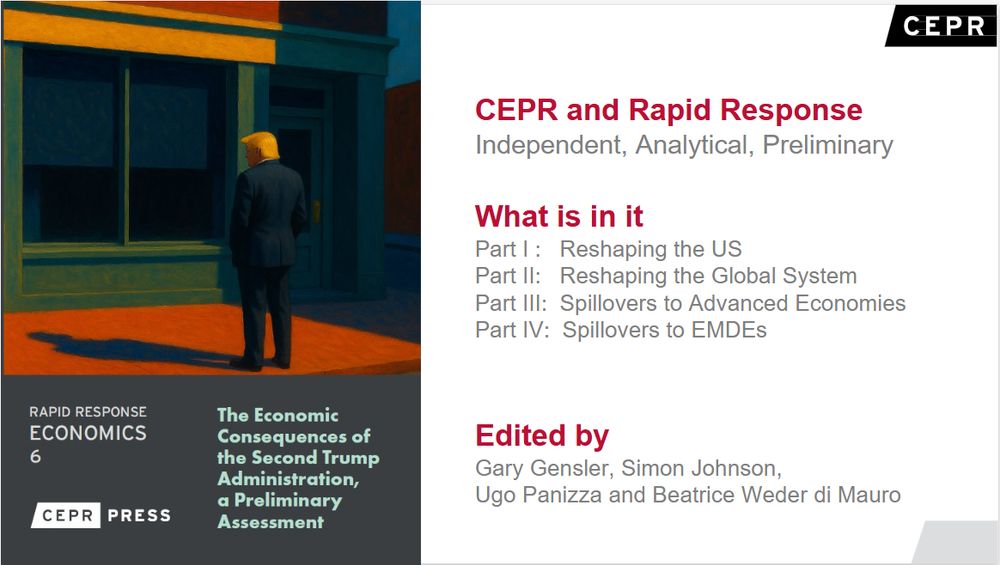Reposted by: Jonathan B. Baker
lnkd.in/ew6UHk3v

Reposted by: Jonathan B. Baker, Trevon D. Logan, Karen Benjamin Guzzo
/1
Reposted by: Jonathan B. Baker


Reposted by: Jonathan B. Baker
cepr.org/publications...
#EconSky

Reposted by: Jonathan B. Baker, Ugo Panizza
"The Economic Consequences of the Second Trump Administration: A Preliminary Assessment"
Editors: Gary Gensler, @simonhrjohnson.bsky.social, @upanizza.bsky.social, @wederdim.bsky.social
Free download: cepr.org/publications...
#EconSky

by Diane Coyle — Reposted by: Jonathan B. Baker, Jonathan Parker, Luis Garicano
som.yale.edu/centers/thur...


Reposted by: Jonathan B. Baker

My new blog post: www.promarket.org/2025/04/11/t...

Both quotes from ssrn.com/abstract=414... I also noted differences between the economic interests of Trumpian populists and big business. That's not saying big business favors democracy. 2/4
